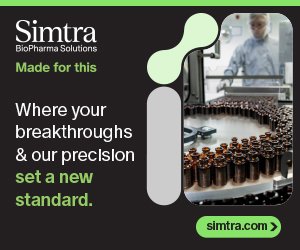Regrowing Damaged Body Parts: How Osteopore, an Australian-listed Company, is Making it Accessible
10 November 2021 | Wednesday | News

Image Source : Public Domain
Challenges in Tissue Engineering
Growing organs outside the body, then putting it back inside to ultimately improve your health and change your life — almost seems unreal. This technique is called in-vitro tissue engineering: functionally mature tissue structures are recreated in a bioreactor to replace tissue in the body. It sounds futuristic, but it is becoming reality.
However, in-vitro tissue engineering must overcome a number of concerns before it can be clinically implemented and commercialised.
Finding enough cells that are acceptable to our immune system is not simple. There are also challenges in terms of the availability and scaling-up capability of in-vitro tissue engineering. Cost-effectiveness, preservation and handling also present problems.
The Two Techniques in Tissue Engineering
At Osteopore, we have developed and commercialised a more direct way of applying tissue engineering concepts to achieve clinical impact. Rather than implanting cells or organs into a body from an external source, in-situ tissue engineering recruits endogenous stem cells (cells created within the living organism) to the site of an injury by using biomaterial with 3D microarchitecture and/or growth-factor-based cues to enhance healing.
With in-situ tissue engineering, we are looking at medical products that interface with blood, blood vessels and cells — working in proposed harmony with your body's natural functions. By doing so, we harness the intrinsic regenerative potential of the body to regrow tissue, as opposed to creating it wholesale in an in-vitro environment.
In-situ tissue engineering represents the future; not only for Osteopore but potentially for the medical devices industry as a whole because it is less onerous from a regulatory standpoint, it is a more scalable and cost-effective solution, it is a more familiar process to the surgical community, and it has favourable long-term, lasting impacts.
Most Read
- China’s Biopharma Dealmaking Surges in H1 2025, Driven by Record Licensing and Oncology Focus
- Chikungunya in China: How a “Forgotten” Arbovirus Found the Perfect Storm
- How Innovation Gaps in Biopharma Raise New Safety Concerns
- Smart Implants and the Future of Musculoskeletal Injury Treatment
- How Ethical Gaps in Psychiatry Could Undermine Biopharma Progress
- The Evolving Landscape of Women’s Health Innovation in the Asia-Pacific
- Using NLP-Driven Decision Support in Emergency Health Assistance
- Taiwan Steps Into the Global Spotlight With a New Cancer Therapy
- The Role of Unique Device Identification (UDI) in Tracing Medical Device Safety
- The Importance of a Patient’s Mental Health During Clinical Trials
Bio Jobs
- Avantor’s New CEO Ligner Aims to Unlock Global Potential and Deliver Shareholder Value
- AstraZeneca Commits $50 Billion to U.S. Expansion by 2030 in Biggest-Ever Global Investment
- Thermo Fisher, SAMRC, and South Africa’s Department of Science and Innovation Launch CATIR to Nurture Next-Gen Scientists
- Cube Biotech Appoints Former Sartorius CEO Dr. Joachim Kreuzburg to Board of Directors
- FDA’s AI Transition Marks a Turning Point in Drug Review: Industry Faces Pressure to Adapt Amid 20% Workforce Cut
- WuXi XDC Completes Mechanical Build of Singapore Bioconjugate Manufacturing Hub
News
Editor Picks











